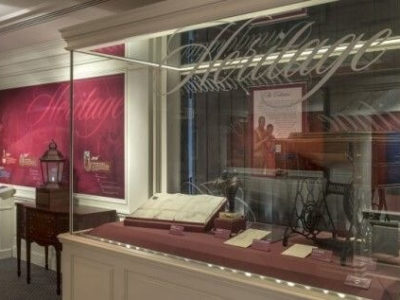Black History Month is great! It sets aside the time for all Americans to take notice of the history made by African Americans. Or is it? Bernard and Shirley Kinsey spent more than 35 years traveling the world to collect African American art and documents. They showcase the artifacts as the Kinsey Collection, featured at Walt Disney World’s Epcot and the Smithsonian’s National Museum of African American History and Culture. With February kicking off, College Magazine sat down with Bernard Kinsey to discuss why he’s not too keen on the idea of “Black History Month.”
College Magazine: What is wrong with having a black history month?
Bernard Kinsey: Nothing is wrong with it. The fallacy of having a “black history month” is not that it’s not important—because it is terribly important—but [I] believe that black history should be taught 12 months a year. The contributions of African Americans in building America are incalculable. When you try to put everything in a 28-day month, the shortest month of the year, you miss the significance and importance of those contributions.
CM: What led you to that realization?
BK: Normally in February, all we talk about are the same three or four people and we know that there are literally hundreds of thousands of African Americans that made significant contributions. Nobody knows about the Enterprise Railroad Company of 1875 or the [one of the] first newspaper[s] in 1829. All of these areas, once you document them, you begin to see that this story is much richer than a footnote. It really is a chapter of American history that plays out from the beginning of the book all the way to the end.
CM: Do you think black history month helps to integrate African American history into our society as a whole?
BK: We have to be careful about the word “integrate.” Usually integration in America means that black culture gets diluted. So I am not a big proponent of integration. I’m more a proponent of desegregation. In other words, I believe that each of our cultures should have an opportunity to be experienced on their own rather than “in a big melting pot,” which is what normally happens.
CM: How does The Kinsey Collection help to educate kids who might not otherwise learn about this in school?
BK: In the State of Florida, the Kinsey Collection is part of the curriculum to teach African American history to 3.4 million kids so we are already doing that. We are close to doing this in the State of California.
CM: How should black history be brought into the school curriculum?
BK: One of [the ways] is putting the curriculum in our schools through the different subject matters. Right now, African American history is taught really as a footnote to American history. We say that African American history is American history and frankly, from almost the day this country was founded, African Americans have been integral to everything that’s happened in this country: culturally, music, religion, the language, cooking, inventions and ingenuity. Literally every aspect of American life has not only been influenced but has been impacted in a positive way by African American contributions.
CM: How can we retroactively reeducate adults?
BK: One way is to get our book. If you get our book, from the first page [states] that African Americans have been here from 1595. The other way is to be more aware of the story of accomplishment and achievement that African Americans contributed in making America the great society and the great country we are today.
“African American Treasures” from the Kinsey Collection, presented by Toyota, is currently on display at Florida A&M University’s Foster-Tanner Fine Arts Gallery. If you attend college in Tallahassee, Florida, or plan to drive through, stop by and explore the collection. The exhibition opened my eyes, and as Mr. Kinsey said, it definitely teachers “what you didn’t learn in high school history.”



















